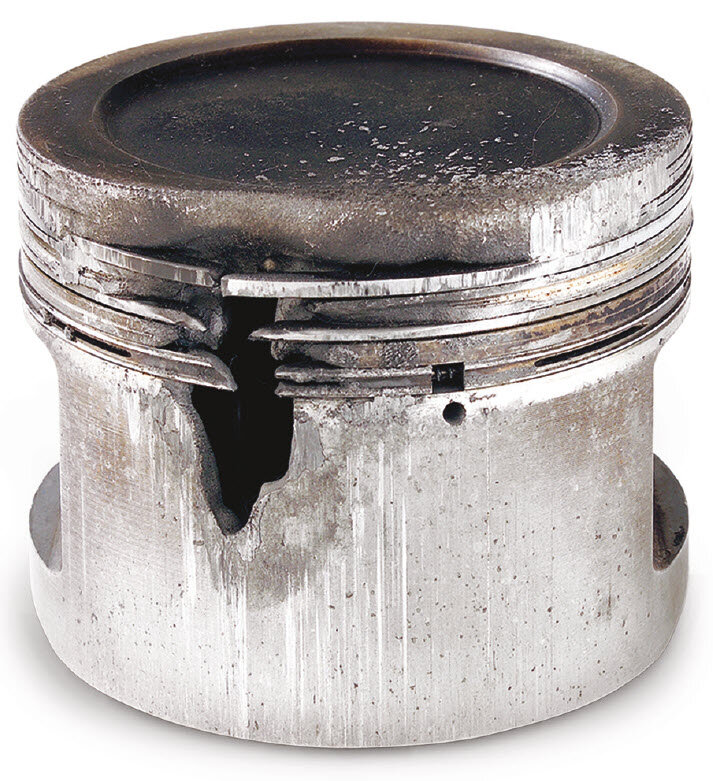Removal of material by melting from the piston head and piston skirt (petrol engines)
DESCRIPTION OF THE DAMAGE

- The piston head has melted through behind the piston rings.
- The piston skirt has not seized; melted material has been worn away off the damaged area onto the piston skirt.
DAMAGE ASSESSMENT
The removal of material by melting from piston heads in petrol engines is the result of glow ignition on pistons with mostly flat crowns and relatively large quenching areas. Glow ignition is triggered by glowing parts in the combustion chamber that are hotter than the self-ignition temperature of the air-gas mixture. These are essentially the spark plug, the exhaust valves and any oil carbon deposits on the combustion chamber walls.
In the quenching area, the piston head is heated up significantly due to the glow ignition. The high temperatures cause the piston material to go soft. Material is carried away as far as the oil control ring due to the combined effects of inertia force and combustion gases entering the damage area.
In the quenching area, the piston head is heated up significantly due to the glow ignition. The high temperatures cause the piston material to go soft. Material is carried away as far as the oil control ring due to the combined effects of inertia force and combustion gases entering the damage area.
POSSIBLE CAUSES FOR THE DAMAGE
- Heat value of the spark plugs too low.
- Mixture too lean, resulting in higher combustion temperatures.
- Damaged valves or insufficient valve clearance, causing the valves to not close correctly. The hot combustion gases streaming past cause the valves to start to glow. This primarily affects the exhaust valves, as the intake valves are cooled by the fresh gases.
- Glowing combustion residue on the piston crowns, the cylinder head, the valves and the spark plugs.
- Unsuitable fuel with an octane rating that is too low. The fuel quality must correspond to the compression ratio of the engine, i.e. the octane rating of the fuel must cover the octane requirements of the engine under all operating conditions.
- Petrol contaminated by diesel, which lowers the octane rating of the fuel.
- High engine or intake air temperature caused by inadequate ventilation of the engine compartment.
- General overheating of the engine.
Side info